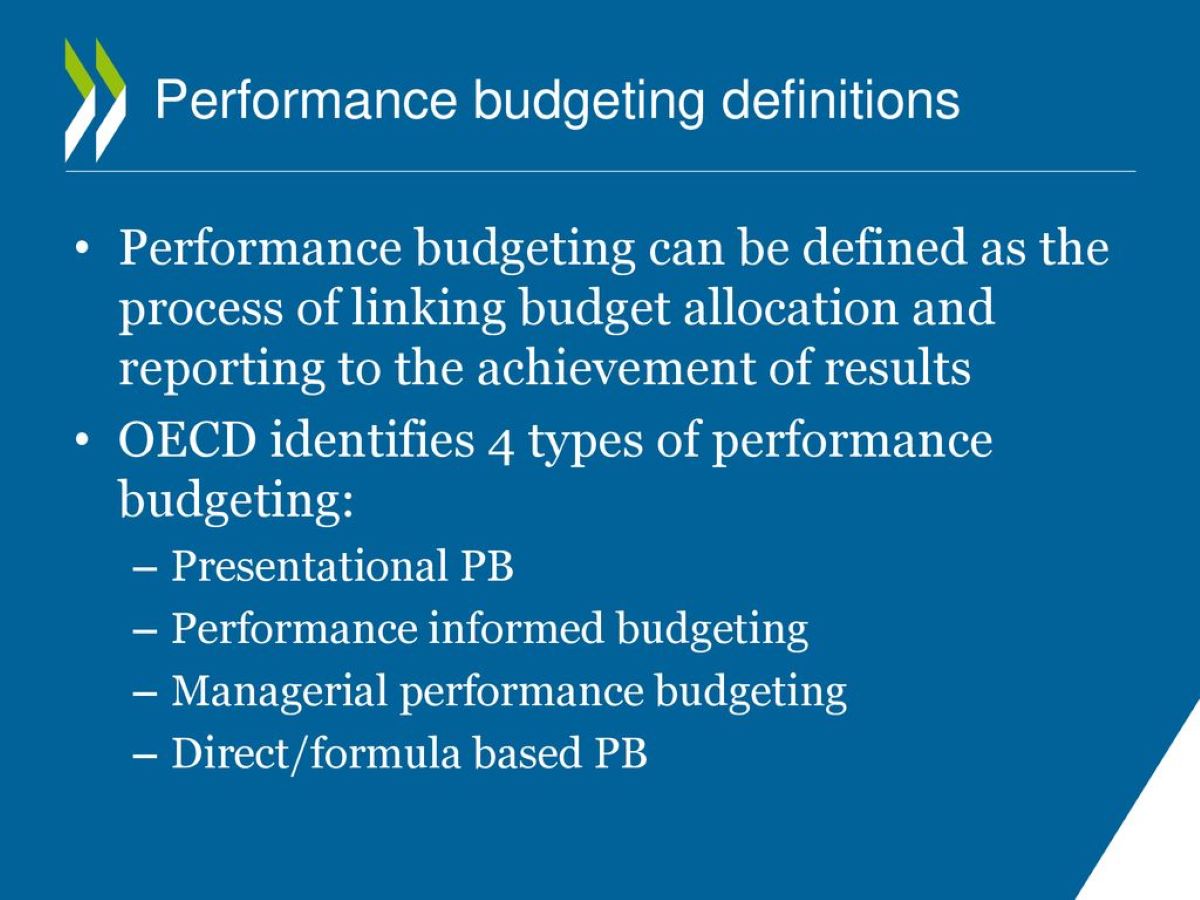

Finance
What Are Payment And Performance Bonds
Published: October 12, 2023
Looking for payment and performance bonds? Learn more about these important financial instruments in the world of finance.
(Many of the links in this article redirect to a specific reviewed product. Your purchase of these products through affiliate links helps to generate commission for LiveWell, at no extra cost. Learn more)
Table of Contents
- Introduction
- Definition of Payment Bonds
- Purpose of Payment Bonds
- Benefits of Payment Bonds
- Definition of Performance Bonds
- Purpose of Performance Bonds
- Benefits of Performance Bonds
- Difference Between Payment Bonds and Performance Bonds
- Importance of Payment and Performance Bonds in Construction Projects
- Conclusion
Introduction
When it comes to construction projects, there are various risks and uncertainties involved. Contractors and project owners need assurance that they will be protected financially in case of non-payment or inadequate performance by the contractor. This is where payment bonds and performance bonds come into play.
Payment bonds and performance bonds are two types of surety bonds that are commonly used in the construction industry to provide financial security and protect the interests of all parties involved in a project. While they may sound similar, there are distinct differences between the two.
In this article, we will explore the definitions, purposes, and benefits of payment bonds and performance bonds. We will also discuss the importance of these bonds in construction projects and highlight the key differences between them.
Whether you are a contractor, project owner, or simply someone interested in understanding the financial mechanisms of the construction industry, this article will provide valuable insights into payment bonds and performance bonds and their significance in ensuring the smooth and successful completion of construction projects.
Definition of Payment Bonds
Payment bonds are a type of surety bond that guarantees the payment of subcontractors, suppliers, and laborers involved in a construction project. In simpler terms, a payment bond serves as a form of financial protection for those who are responsible for providing materials, labor, or services for the project.
These bonds are typically issued by a surety company or a bonding agency and are required by law in many construction projects, particularly those funded by public entities. The payment bond ensures that subcontractors and suppliers will be paid for their work and expenses, even if the general contractor fails to make the necessary payments.
To obtain a payment bond, the contractor is required to provide necessary documentation and undergo a thorough underwriting process. This includes submitting financial statements, proof of insurance, and other relevant information. Once the bond is issued, it serves as a guarantee that funds will be available to cover the subcontractors’ and suppliers’ payments in the event of non-payment by the contractor.
Payment bonds typically cover the full amount of the contract value and remain in effect throughout the duration of the project. They offer assurance to the subcontractors and suppliers that they will be compensated for their work, which in turn helps to promote a healthy and reliable supply chain within the construction industry.
In the unfortunate event of non-payment or disputes, the subcontractors, suppliers, or laborers can make a claim against the payment bond to recover their rightful payments. The bonding company then steps in to investigate the claim and compensate the affected parties, up to the bond’s coverage amount.
It is important to note that payment bonds are not designed to protect the contractor. Their primary purpose is to safeguard the rights of the subcontractors, suppliers, and laborers, ensuring their financial well-being throughout the construction process.
Purpose of Payment Bonds
The primary purpose of payment bonds is to protect the interests of subcontractors, suppliers, and laborers involved in a construction project. These bonds ensure that these parties receive the compensation they are due for their contributions, even if the general contractor fails to fulfill their payment obligations.
One of the main reasons payment bonds are required in many construction projects is to mitigate the risk of non-payment. Construction projects often involve numerous subcontractors and suppliers who are reliant on timely and adequate payment to sustain their businesses. Without the assurance of a payment bond, these parties might be hesitant to participate in a project due to concerns over payment disputes or financial instability on the part of the general contractor.
Payment bonds provide a safety net by guaranteeing that subcontractors, suppliers, and laborers will be paid for their work and materials. This financial security encourages a healthy working relationship between all parties involved in the construction project, promoting trust and collaboration.
Furthermore, payment bonds contribute to the overall efficiency and smooth functioning of construction projects. By ensuring that payments are made promptly, these bonds help maintain a steady flow of work and resources. Subcontractors, suppliers, and laborers can carry out their tasks with confidence, knowing that their compensation is protected.
Additionally, payment bonds are crucial in public construction projects funded by taxpayers’ money. These projects are typically subject to strict regulations and oversight, and payment bonds provide an extra layer of protection against potential mismanagement or misuse of funds. They help maintain transparency and accountability, ensuring that taxpayer dollars are used judiciously.
Ultimately, the purpose of payment bonds is to foster a fair and reliable payment system within the construction industry. These bonds offer subcontractors, suppliers, and laborers the peace of mind that their hard work will not go uncompensated. By safeguarding the financial interests of all parties involved, payment bonds help create a level playing field and promote a more sustainable and trustworthy construction industry.
Benefits of Payment Bonds
Payment bonds offer a range of benefits to all parties involved in a construction project. Let’s explore some of the key advantages of using payment bonds:
- Protection for subcontractors and suppliers: The primary benefit of payment bonds is that they provide financial protection for subcontractors, suppliers, and laborers. These vulnerable parties are often at risk of non-payment or delayed payments, which can have significant consequences for their businesses. Payment bonds ensure that they receive the compensation they are owed, even if the general contractor defaults on their payment obligations.
- Encourages participation from reliable subcontractors and suppliers: By requiring payment bonds, construction projects attract reputable subcontractors and suppliers who are more likely to deliver quality work and materials. These professionals understand the importance of payment security and are more willing to participate in projects that provide such guarantees. This improves the overall quality and reliability of the project.
- Promotes a smoother construction process: Payment bonds contribute to the smooth flow of work and resources throughout the construction project. With the assurance of payment, subcontractors, suppliers, and laborers can focus on their tasks without worrying about financial uncertainties. This leads to reduced disruptions, improved productivity, and timely project completion.
- Enhances project reputation and credibility: Projects that utilize payment bonds demonstrate a commitment to fair and ethical business practices. This enhances the reputation and credibility of the project and the parties involved. It instills confidence in stakeholders, investors, and the public, making it more likely for future projects to attract funding and support.
- Ensures compliance with legal and contractual obligations: Many construction projects, particularly those funded by public entities, require the use of payment bonds as a legal mandate. By obtaining and maintaining payment bonds, contractors demonstrate their compliance with these obligations, avoiding potential legal disputes and penalties.
- Reduces financial risk for project owners: Payment bonds not only protect subcontractors and suppliers but also mitigate financial risk for project owners. In the event of a dispute or default by the general contractor, the bonding company steps in to cover the outstanding payments. This ensures that the project owner is not held responsible for the contractor’s payment failures.
Overall, payment bonds provide a range of benefits that contribute to a fair and efficient construction process. They protect the interests of subcontractors, suppliers, and laborers, promote accountability, and enhance the overall quality and reputation of the project.
Definition of Performance Bonds
Performance bonds are a type of surety bond commonly used in the construction industry to guarantee that the contractor will complete a project according to the terms of the contract. These bonds provide financial protection for the project owner, ensuring that the work will be completed as agreed upon, and any potential issues will be rectified.
Performance bonds are typically issued in conjunction with payment bonds and are considered a standard requirement in many construction contracts. They serve as a guarantee that the contractor will fulfill their contractual obligations, including delivering the project on time, adhering to quality standards, and addressing any defects or deficiencies.
Similar to payment bonds, performance bonds are issued by a surety company or a bonding agency. The contractor is usually responsible for obtaining the bond, providing necessary documentation, and undergoing an underwriting process. Once the bond is in place, it guarantees that the project owner will be compensated if the contractor fails to meet their contractual obligations.
The coverage amount of a performance bond is typically a percentage of the contract value, and it remains in effect throughout the duration of the project. In the event of non-performance or default by the contractor, the project owner can make a claim against the bond to recover damages, such as the cost of hiring a new contractor to complete the work or compensating for any losses incurred.
It is important to note that performance bonds are not designed to protect the contractor. Instead, they provide a form of assurance to the project owner and stakeholders that the contractor will fulfill their duties. Contractors must fulfill their obligations under the contract and meet the agreed-upon project specifications to avoid potential claims against the performance bond.
Performance bonds play a crucial role in the construction industry by ensuring that projects are completed to the client’s satisfaction. They provide financial security and peace of mind to project owners, helping them mitigate the risks associated with contractor performance and ensuring successful project delivery.
Purpose of Performance Bonds
The purpose of performance bonds in the construction industry is to protect the project owner and provide assurance that the contractor will fulfill their contractual obligations. These bonds serve several key purposes:
- Guarantee of project completion: One of the primary purposes of performance bonds is to ensure that the contractor completes the project according to the agreed-upon terms and specifications. The bond provides financial protection for the project owner, assuring them that the work will be done as intended and any issues or deficiencies will be rectified.
- Risk mitigation: Performance bonds help mitigate the risks associated with contractor non-performance or default. The bond acts as a safety net for the project owner, providing a means of compensation if the contractor fails to fulfill their obligations. This reduces the financial risks and potential losses faced by the project owner, ensuring that the project can proceed smoothly.
- Quality assurance: By requiring performance bonds, project owners can have confidence in the quality of work that will be delivered. Contractors are incentivized to meet the specified standards and ensure that the project is completed to the agreed-upon quality levels. If any defects or deficiencies arise, the bond can be used to address and rectify these issues.
- Financial protection for project owners: Performance bonds provide financial protection for the project owner in the event of contractor default. If the contractor fails to complete the project or breaches the terms of the contract, the project owner can make a claim against the bond to recover their losses. This ensures that the project owner is not left without the funds necessary to complete the project or cover any additional expenses incurred due to contractor shortcomings.
- Enhanced contractor credibility: Contractors who obtain performance bonds demonstrate their commitment to fulfilling their contractual obligations and deliver high-quality work. By having a performance bond in place, contractors can build trust and credibility with project owners, making them more attractive candidates for future projects. This can lead to increased opportunities and positive business relationships.
Overall, the purpose of performance bonds is to provide assurance and financial protection for project owners, mitigate risks, and ensure the successful completion of construction projects. These bonds play a crucial role in maintaining the integrity of the construction industry and fostering confidence among all stakeholders involved in a project.
Benefits of Performance Bonds
Performance bonds offer a range of benefits to all parties involved in a construction project. Let’s explore some of the key advantages of using performance bonds:
- Protection for project owners: Performance bonds provide financial protection for project owners by ensuring that the contractor fulfills their contractual obligations. If the contractor fails to complete the project or breaches the terms of the contract, the project owner can make a claim against the bond to recover their losses. This helps safeguard project owners from potential financial risks and ensures that the project can be completed successfully.
- Quality assurance: Performance bonds encourage contractors to deliver work of the highest quality. Contractors know that their performance and adherence to project specifications are essential to avoid claims against the bond. This emphasis on quality ensures that the project owner will receive a completed project that meets the agreed-upon standards and specifications.
- Increased confidence for project stakeholders: Performance bonds instill confidence in project stakeholders, including investors, lenders, and other parties involved. The existence of a performance bond assures them that appropriate measures are in place to protect their interests and investments. This increased confidence can lead to more support and resources for the project.
- Facilitates fair competition: Performance bonds contribute to fair competition in the construction industry. By requiring contractors to obtain performance bonds, project owners create a level playing field, allowing qualified contractors to compete based on their capabilities and expertise rather than financial strength alone. This promotes a more transparent and unbiased selection process.
- Dispute resolution: In the event of disputes or conflicts, performance bonds can provide a mechanism for resolution. Project owners can make claims against the bond to seek compensation for any losses incurred due to contractor non-performance or breach of contract. This provides an avenue for resolving issues and helps keep the project on track.
- Financial security for subcontractors and suppliers: Performance bonds indirectly benefit subcontractors and suppliers, as they are assured that the project will be completed successfully. When the contractor fulfills their obligations, subcontractors and suppliers who have provided services or materials can expect timely payment. This financial security encourages the participation of reliable subcontractors and suppliers in the project.
Overall, performance bonds offer a range of benefits, including financial protection, quality assurance, increased stakeholder confidence, fair competition, dispute resolution, and financial security for subcontractors and suppliers. These benefits contribute to the successful and efficient execution of construction projects, ensuring the satisfaction of all parties involved.
Difference Between Payment Bonds and Performance Bonds
Although payment bonds and performance bonds are both types of surety bonds used in the construction industry, they serve distinct purposes and cover different aspects of a construction project. Let’s explore the key differences between payment bonds and performance bonds:
Definition: Payment bonds guarantee that subcontractors, suppliers, and laborers will be paid for their work and materials, even if the general contractor fails to make the necessary payments. On the other hand, performance bonds ensure that the contractor will fulfill their contractual obligations in terms of project completion, adherence to specifications, and quality of work.
Beneficiary: The primary beneficiary of a payment bond is the subcontractors, suppliers, and laborers who are entitled to receive payment for their contributions to the project. Performance bonds, on the other hand, primarily protect the project owner and provide assurance that the contractor will meet their contractual obligations.
Purpose: The purpose of a payment bond is to ensure that all parties involved in a construction project receive proper and timely payment for their work and materials. It creates a financial safety net for those involved in the supply chain. On the other hand, performance bonds exist to guarantee the successful completion of the project, meeting project specifications, and addressing any defects or deficiencies.
Financial Coverage: Payment bonds cover the amount owed to subcontractors, suppliers, and laborers in the event of non-payment or disputes. The coverage amount is typically the full value of the contract. Performance bonds, on the other hand, cover the project owner’s losses if the contractor fails to complete the project or breaches the terms of the contract. The coverage is usually a percentage of the contract value.
Claims Process: In the case of payment bonds, subcontractors, suppliers, or laborers make claims against the bond to recover their unpaid amounts. The bonding company investigates the claim and compensates the affected parties. With performance bonds, the project owner makes a claim if the contractor fails to fulfill their contractual obligations. The bonding company steps in to assess the claim and provides compensation for the project owner’s losses.
Fulfillment of Obligations: Payment bonds are fulfilled when all subcontractors, suppliers, and laborers are properly paid and satisfied. Once the payments are made, the payment bond’s purpose is fulfilled. Performance bonds are fulfilled when the contractor completes the project according to the contract terms and specifications. If any deficiencies arise, they are rectified to the satisfaction of the project owner.
While payment bonds and performance bonds have different purposes and beneficiaries, they often go hand in hand in construction projects. Both bonds contribute to the financial security and smooth execution of a project, protecting the interests of subcontractors, suppliers, laborers, and project owners in their respective areas.
Importance of Payment and Performance Bonds in Construction Projects
Payment bonds and performance bonds play a vital role in ensuring the success and integrity of construction projects. Let’s explore the importance of these bonds in more detail:
- Financial Protection: Payment bonds provide financial protection for subcontractors, suppliers, and laborers by guaranteeing their rightful payment, even if the contractor defaults or fails to make the necessary payments. Performance bonds protect the project owner by ensuring that the contractor fulfills their contractual obligations, reducing the risk of financial losses due to non-performance or breach of contract. These bonds create a safety net for all parties involved, promoting fair and equitable business practices.
- Encourages Participation: The existence of payment and performance bonds encourages participation from qualified subcontractors, suppliers, and contractors. Subcontractors and suppliers are more likely to participate in a project that offers payment bonds, as they have reassurance that their payments will be protected. Contractors who can provide performance bonds showcase their commitment to fulfilling contractual obligations, making them more attractive candidates for project owners. This attracts reliable and experienced professionals, ensuring the project is carried out by competent individuals.
- Transparency and Accountability: Payment and performance bonds contribute to transparency and accountability in construction projects. By requiring these bonds, project owners can establish a level playing field and ensure that all parties involved are financially responsible for their commitments. The bonds promote a transparent payment system, reduce the risk of disputes, and hold contractors accountable for their work, fostering a culture of integrity and professionalism within the construction industry.
- Risk Mitigation: Construction projects inherently involve risks, such as non-payment, project delays, or subpar workmanship. Payment bonds mitigate the risk of non-payment, providing subcontractors and suppliers with the confidence to participate in projects without the fear of financial loss. Performance bonds mitigate the risk of non-performance, ensuring the project owner’s interests are protected in case of contractor default. By addressing these risks, payment and performance bonds contribute to the overall success and timely completion of construction projects.
- Quality Assurance: Performance bonds promote quality assurance by holding contractors accountable for meeting project specifications and standards. Contractors are incentivized to deliver work of the highest quality to avoid claims against the bond. This emphasis on quality ensures that the project owner receives a completed project that meets their expectations, reducing the need for rework, and ensuring customer satisfaction.
- Project Credibility and Success: Projects that utilize payment and performance bonds are perceived as more credible and trustworthy. The presence of these bonds gives confidence to project stakeholders, including investors, lenders, and the public, that appropriate measures are in place to protect their interests. This can attract more funding, support, and participation, leading to increased project success and a positive reputation for all parties involved.
Overall, payment and performance bonds are essential components of construction projects. They bring financial security, transparency, accountability, risk mitigation, and quality assurance to the table. By utilizing these bonds, construction projects can proceed smoothly and with confidence, benefiting all stakeholders involved.
Conclusion
Payment bonds and performance bonds are indispensable tools in the construction industry, providing financial security, transparency, and assurance for all parties involved in a project. While payment bonds ensure that subcontractors, suppliers, and laborers are paid for their contributions, performance bonds guarantee that the contractor meets their contractual obligations. Together, these bonds promote fairness, accountability, and successful project completion.
The importance of payment and performance bonds in construction projects cannot be overstated. They mitigate financial risks, encourage reliable participation, and ensure timely and quality project delivery. Payment bonds protect subcontractors and suppliers from non-payment, fostering a reliable supply chain and maintaining healthy business relationships. Performance bonds assure project owners that the contractor will fulfill their obligations, reducing the risk of financial loss and ensuring project success.
These bonds bring transparency and accountability to construction projects, promoting fair competition and attracting reputable professionals. They provide a safety net, protecting the interests of all stakeholders and facilitating efficient dispute resolution. By requiring payment and performance bonds, project owners demonstrate their commitment to ethical business practices, increasing credibility and attracting support from investors, lenders, and the public.
In conclusion, payment bonds and performance bonds play a pivotal role in building a stable and reliable construction industry. They ensure fair payment practices, encourage high-quality work, mitigate risks, and lay the foundation for successful and reputable construction projects. By understanding the definitions, purposes, and benefits of these bonds, stakeholders can navigate the construction landscape with confidence, knowing that their interests are protected throughout the process.














